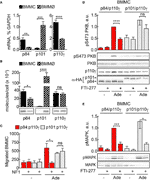
Matos T, Queiroz JA, Bülow L (2013) Binding and elution behavior of small deoxyribonucleic acid fragments on a strong anion-exchanger multimodal chromatography resin. Yamamoto S, Nakamura M, Tarmann C, Jungbauer A (2007) Retention studies of DNA on anion-exchange monolith chromatography Binding site and elution behavior. Yamamoto S, Yoshimoto N, Tarmann C, Jungbauer A (2009) Binding site and elution behavior of DNA and other large biomolecules in monolithic anion-exchange chromatography. Ghanem A, Healey R, Adly FG (2013) Current trends in separation of plasmid DNA vaccines: a review. Liu MA (2011) DNA vaccines: an historical perspective and view to the future. Pereira LR, Prazeres DMF, Mateus M (2010) Hydrophobic interaction membrane chromatography for plasmid DNA purification: design and optimization. Sousa A, Sousa F, Queiroz JA (2012) Advances in chromatographic supports for pharmaceutical-grade plasmid DNA purification. This behaviour can be linked to the presence of the more hydrophobic phenyl group in Capto Adhere, leading to stronger retention of ssDNA molecules, which have a more hydrophobic character due to a higher degree of base exposure. Another pronounced difference between the resins was observed in the inverted elution of ss- and dsDNA, where ssDNA eluted at 2.88 M NaCl on Capto Adhere, while on Capto Q ImpRes ssDNA eluted already at 1.47 M NaCl. This recognition was not observed for Capto Adhere. Capto Q ImpRes provided a recognition for guanylate bases when samples of deoxynucleotides or poly(dG) were examined. All deoxynucleotides and DNAs tested bound strongly to the chromatographic materials and could be eluted by a linear gradient of increasing NaCl concentration. These variations in biophysical properties have been utilized for comparative separations on these two resins. The intrinsic differences between single- and double-stranded DNAs are related to charge, hydrophobicity, size and three-dimensional structure. Capto Adhere carries a multimodal ligand which combines strong anion with aromatic recognition, while Capto Q ImpRes is a strong anion exchanger with a chemically similar ligand, but without a phenyl group. Explore the process of plasmid DNA manufacturing from bacteria to final filtration below, and discover the solutions that steer you through every step.The differences in chromatographic behaviour of individual deoxynucleotides as well as small single-stranded and double-stranded DNA molecules have been examined for two resins from the Capto family: Capto Adhere and Capto Q ImpRes.


Sartorius provides various tools for efficient manufacturing throughout the production of pDNA.

Purified pDNA can be used as a raw material in processes such as the production of adeno-associated (AAV) and lentiviral vectors, in vitro transcription (IVT) reactions during mRNA production, and direct gene transfer. They replicate independently (episomal) from the bacterial genomic DNA, a property that makes them ideally suited as a vector for genetic engineering. Plasmids are circular molecules of DNA found naturally occurring in bacteria. Continued progress in gene therapy and DNA/ RNA-based therapeutics has led to a growing demand for reliable pDNA production processes suitable for clinical applications. Plasmid DNA (pDNA) represents a critical starting point for many genetic engineering pursuits, including the development of recombinant proteins, viral vectors, and advanced biotherapeutics.


 0 kommentar(er)
0 kommentar(er)
